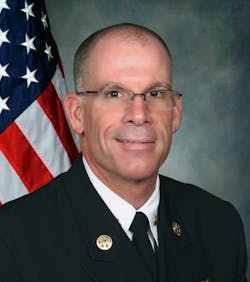More than 30 years ago, I, like many of you, joined the fire service with the hopes and aspirations of serving as a career firefighter in a large metropolitan fire department. These hopes and dreams were often filled with images of myself and a crew of well-trained firefighters riding on the tailboard with lights flashing and sirens echoing off the myriad buildings that defined the city’s skyline. Armed with a death grip of adrenaline, we hung onto the back handrail that overshadowed the hosebed as the apparatus operator carved his way through the congested streets en route to the raging inferno that was now clearly visible a few blocks away. With lives hanging in the balance, we flawlessly performed our assigned tasks. We forced entry, executed rapid wall-to-wall searches, coordinated our ventilation efforts, knocked down the fire in record time and successfully rescued the innocent civilians from the ravages of fire.
Fast-forward to today, and it’s easy to see that the mental images that so many of us conjured about our role in the fire service have not always become a reality. In fact, for some firefighters, the reality has taken an unforeseen turn.
On June 12, 2016, Omar Mateen armed himself with two recently purchased guns, entered a bar in Orlando, FL, and killed 49 innocent civilians and injured dozens more before being killed in a shootout with police. Six months earlier, on Dec. 2, 2015, at the Inland Regional Center in San Bernardino, CA, Syed Rizwan Farook and his partner Tashfeen Malik, armed with assault rifles and semi-automatic handguns, shot 14 people dead and wounded 22 others. Three years earlier, in the small town of Newtown, CT, Adam Lanza shot his mother before fatally shooting 20 children and six staff members during the Sandy Hook Elementary School shooting.
In the past four years, firefighters representing large urban/metro fire departments as well as much smaller suburban/rural volunteer departments have been charged with responding to and managing the chaotic aftermath of some of these deadly mass shootings.
While we may never really know the specific trigger that serves as the catalyst for these horrific events, what we do know is that we must prepare those who serve within our rank and file for a far different image of the reality they may have envisioned when they joined the fire service. The allure that may have filled our dreams and aspirations in the previous days and years can without warning be filled with haunting images. These images could be of a disturbed individual or group whose willful acts of violence suddenly thrust us into the bowels of chaos—chaos that imposes both mental and physical challenges beyond comprehension.
He may not have coined the phrase “high-risk/low-frequency,” but Gordon Graham certainly brought it to the forefront for the American fire service. For more than 30 years, Graham has emphatically stressed the importance of training and preparing for low-probability/high-consequence events, as these “infrequent” events present the highest probability of error, injury, loss of life or compensable damages. The changing reality that far too many of our brothers and sisters throughout the nation have experienced in recent times is without question representative of the events that Graham has long suggested we prepare for.
The question is, “What are we doing to prepare?” Have we taken the time to learn the critical lessons from those who have experienced the horrors of these tragic events? Have we taken the time to mend the relationships with our neighboring jurisdictions and our brothers and sisters in blue to ensure that our call for help will not go unanswered? Have we taken the time to develop common policies and procedures to effectively manage and control our respective response(s) to ensure the highest degree of predictability and accountability amongst our operational crews? Have we clearly defined our go- and no-go policies to reflect the appropriate level of assumed risk and the balance of safety?
The world in which we live and work will forever present us with opportunities and challenges. It is up to us to accept these challenges and face them head on by preparing for what is quickly becoming our new reality.






